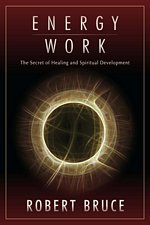Energy Work
Energy Work refers to a broad range of alternative medicine and spiritual practices that are based on the belief in an invisible force or energy that permeates all living things. This concept is often linked to ancient traditions and practices from various cultures around the world, including Qi in Chinese culture, Prana in Indian culture, and Ki in Japanese culture. Energy work aims to balance, restore, and enhance this vital energy within the human body, often for healing, spiritual growth, and well-being.
Overview[edit | edit source]
Energy work encompasses a variety of techniques and practices. Some of the most well-known include Reiki, Qi Gong, Acupuncture, Tai Chi, and Pranic Healing. These practices vary widely in their approaches and methodologies but share a common belief in the importance of the body's energy flow for overall health and vitality.
Principles[edit | edit source]
The core principle behind energy work is that the body is not only made up of physical components such as cells and organs but also has a complex system of energy that flows through it. This energy system includes chakras, meridians, and the aura. Practitioners of energy work believe that imbalances or blockages in this energy system can lead to physical, emotional, or spiritual health issues. Through various techniques, energy workers aim to identify and correct these imbalances, thereby promoting health and healing.
Techniques[edit | edit source]
Reiki[edit | edit source]
Reiki is a form of energy healing that originated in Japan in the early 20th century. Practitioners use a technique called palm healing or hands-on healing through which a "universal energy" is transferred through the palms of the practitioner to the patient in order to encourage emotional or physical healing.
Qi Gong[edit | edit source]
Qi Gong is a holistic system of coordinated body posture and movement, breathing, and meditation used for health, spirituality, and martial arts training. It is traditionally viewed as a practice to cultivate and balance qi.
Acupuncture[edit | edit source]
Acupuncture is a form of traditional Chinese medicine that involves inserting thin needles into the body at specific points. It is based on the premise that these actions can improve the flow of qi in the body, thereby promoting healing and well-being.
Tai Chi[edit | edit source]
Tai Chi is a form of martial arts known for its defense techniques and health benefits. It is also seen as a method for achieving the balance of qi. Tai Chi combines deep breathing and relaxation with slow and gentle movements.
Pranic Healing[edit | edit source]
Pranic Healing is a system of energy healing that focuses on cleansing and energizing the aura. It involves scanning the aura for blockages and then cleansing these areas to allow for fresh energy to flow into them.
Benefits and Criticism[edit | edit source]
Proponents of energy work claim that it can lead to numerous benefits, including reduced stress, improved mood, enhanced overall well-being, and the alleviation of various physical ailments. However, the scientific community often views these practices with skepticism due to the lack of empirical evidence supporting the existence of the energy fields these practices are based on. Critics argue that any benefits experienced are likely due to the placebo effect rather than any manipulation of supposed energy fields.
Conclusion[edit | edit source]
Energy work remains a popular and influential aspect of alternative medicine and spiritual practice. Despite the skepticism and controversy surrounding its efficacy, many individuals continue to seek out and practice energy work for its perceived benefits to health and well-being.
Search WikiMD
Ad.Tired of being Overweight? Try W8MD's NYC physician weight loss.
Semaglutide (Ozempic / Wegovy and Tirzepatide (Mounjaro / Zepbound) available. Call 718 946 5500.
Advertise on WikiMD
|
WikiMD's Wellness Encyclopedia |
| Let Food Be Thy Medicine Medicine Thy Food - Hippocrates |
Translate this page: - East Asian
中文,
日本,
한국어,
South Asian
हिन्दी,
தமிழ்,
తెలుగు,
Urdu,
ಕನ್ನಡ,
Southeast Asian
Indonesian,
Vietnamese,
Thai,
မြန်မာဘာသာ,
বাংলা
European
español,
Deutsch,
français,
Greek,
português do Brasil,
polski,
română,
русский,
Nederlands,
norsk,
svenska,
suomi,
Italian
Middle Eastern & African
عربى,
Turkish,
Persian,
Hebrew,
Afrikaans,
isiZulu,
Kiswahili,
Other
Bulgarian,
Hungarian,
Czech,
Swedish,
മലയാളം,
मराठी,
ਪੰਜਾਬੀ,
ગુજરાતી,
Portuguese,
Ukrainian
Medical Disclaimer: WikiMD is not a substitute for professional medical advice. The information on WikiMD is provided as an information resource only, may be incorrect, outdated or misleading, and is not to be used or relied on for any diagnostic or treatment purposes. Please consult your health care provider before making any healthcare decisions or for guidance about a specific medical condition. WikiMD expressly disclaims responsibility, and shall have no liability, for any damages, loss, injury, or liability whatsoever suffered as a result of your reliance on the information contained in this site. By visiting this site you agree to the foregoing terms and conditions, which may from time to time be changed or supplemented by WikiMD. If you do not agree to the foregoing terms and conditions, you should not enter or use this site. See full disclaimer.
Credits:Most images are courtesy of Wikimedia commons, and templates, categories Wikipedia, licensed under CC BY SA or similar.
Contributors: Prab R. Tumpati, MD

